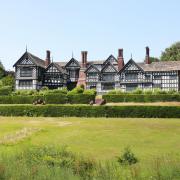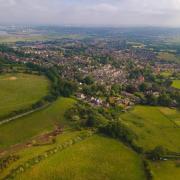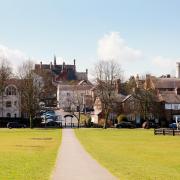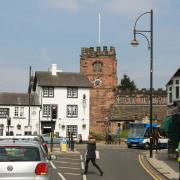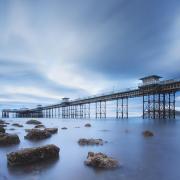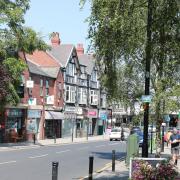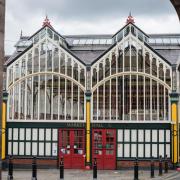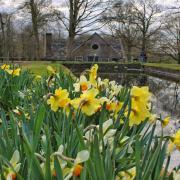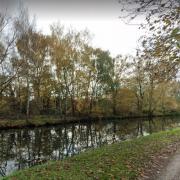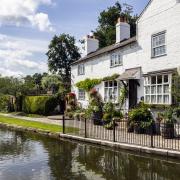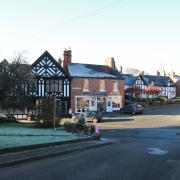The final instalment of our tour of Cheshire’s fine historic houses

The broad-windowed mansions of Elizabeth’s day were built by the New Men of the Tudor Age, those who had conformed to the new Protestant religion and been rewarded with the rich monastic lands.
Their descendants retreated into their parks where they built in the stately manner of Greece and Rome; and their Victorian heirs, some generations on, adopted the upright and moralistic Gothic manner. But by the late 19th century, a new class of landowners was emerging: self-made men of the Industrial Age; shipowners, manufacturers, cotton merchants. Their businesses were in Manchester and along the Mersey, but many of them sought a country residence too. They had drive and individualism and were accustomed to lead, not to follow, and they built in styles on a grand scale. Often, they simply invented a new style if that was what they wanted.
They called their houses by the names that pleased them - Bexton Croft, Tirley Garth, Dawpool - instead of the ubiquitous Halls and Castles of preceding ages.
John Douglas, that most significant Cheshire architect, has already been mentioned. A master of High Gothic, with a pronounced French influence, he progressively turned his hand to a style that drew on the past and yet was all his own. The last decades of the 19th century often looked for inspiration to the Elizabethan age, and at Shotwick Park, Great Saughall, he built a house that is best described as neo-Elizabethan, brick, tall-chimneyed and broad-windowed, though on a Titanic scale.
And on a Titanic scale too was Dawpool, Thurstaston, home of the Ismays, owners of the Titanic herself. Built by R.Norman Shaw in 1882, demolished less than 20 years after the disaster, Dawpool defies any neat classification of style, as indeed does all of Shaw’s work. If we try to relate Dawpool to any previous architecture, 17th century Jacobean may come closest, and though the scale of it far transcends any Jacobean house, there is a clear return to the style, in its wide mullioned windows and irregular gables.
At the time Shaw was working, the Arts and Crafts movement was also in full swing. William Morris is seen as its founder, partly in reaction to the perception that Britain had become a soulless, industrial country. The movement looked back to an age – perhaps an imaginary age - of simple craftsmanship emphasising the textures of its materials. One of its masters was C.F.Voysey, who used wide spaces, set off with wide, stone-framed windows. Though he is hardly represented in Cheshire, with just a few interiors, his influence is clear at the little-known Tirley Garth, near Tarporley, one of the most interesting houses of the county.
Building started in 1907 for a director of Brunner Mond (later ICI) to the design of C.E.Mallows. It is built around a courtyard (a ‘garth’) with unusually broad, low arches that form a cloister. The garden façade, though, is more conventional, centred on the bow window of the two-storey great hall. The huge mullioned windows of this front bring ample light into the rooms. As a house it is greatly admired, but one might wish the windows of the top floor, their lintels exactly in line, did not impart such an aspect of frowning eyes. The same might be said of Dawpool, for the houses are similar in their gables, chimneys and windows.
Knutsford, for some reason, has two of the finest Arts and Crafts houses in Cheshire. Bexton Croft, of 1895, by the renowned Baillie Scott, is partly half-timbered, partly rendered, and somewhat irregular, as were most Arts and Crafts houses. The architects who worked in this style were in the habit of designing every interior and exterior detail, usually both highly original and of outstanding craftsmanship. The present owner of Bexton Croft captured Arts and Crafts design perfectly in a comment to me: he described the house as ‘wholesome’. The detailing of nearby Woodgarth, a rambling L-shaped building of 1903 by Sir Percy Worthington includes a delicate wall-mounted sundial, hand-carved, with a motto reminding the reader of the passage of time.
Neo-Elizabethan was probably the most popular late-nineteenth century style to be found in Cheshire. Thornton Manor is well-known, built for William Lever of Port Sunlight fame and again, built on a scale to which only the wealthiest could aspire. Rookery Hall at Worleston is partly Elizabethan, partly French – a slightly bizarre yet effective building originally remodelled for Baron William von Schroeder of the banking family. Hill Bark at Frankby, also built for an industrialist – in this case, Robert Hudson, the soap manufacturer - is beautifully set, placed on a knoll at the head of a low valley, its black-and-white front and elaborate brick chimneys looking as though it has stood for centuries in this quiet spot. Taking its inspiration from Little Moreton Hall in its many-windowed entrance court, it is considered one of the finest Victorian timber-framed buildings in England. But it has not, in fact, stood for centuries here.
It was built on Bidston Hill and its new owner, Sir Ernest Royden of Cunard, though liking the house, preferred a more rural location. Lesser men might have built from new, but Sir Ernest, who clearly did not let minor obstacles stand in his way, preferred instead to move it, brick by brick and beam by beam, to its present location.
From the early houses of the Tudors, top-heavy and elaborately decorated through the austere symmetry of the Georgian age, through the massively- turreted Gothic mansions of earnest Victorians, the wheel turned full circle, back to a revived Elizabethan architecture and the new Arts and Crafts style that hinted at the medieval.
The grandest of Cheshire’s houses are now hotels or in the care of the National Trust. The landed gentry and the industrial magnates who built them have departed the stage. But in those mansions that survive here, perhaps 500 of them, we can still enjoy the elegance they created.






